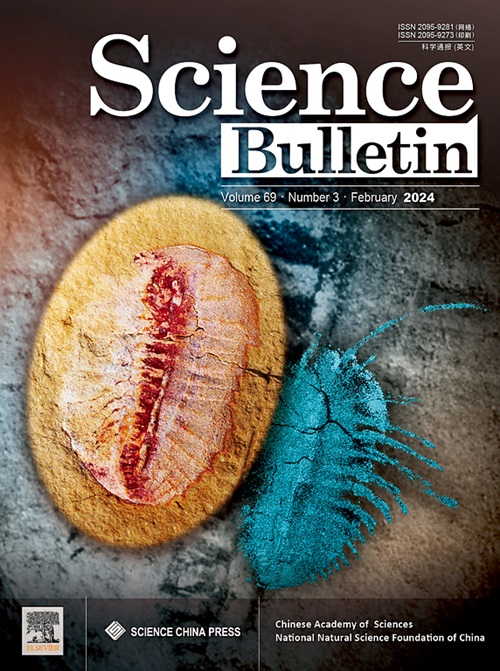Integrative scATAC-seq and mtDNA mutation analysis reveals disease-driven regulatory aberrations in AML
IF 21.1
1区 综合性期刊
Q1 MULTIDISCIPLINARY SCIENCES
引用次数: 0
Abstract
Disturbances in transcriptional regulation during hematopoiesis can lead to aberrant hematopoietic differentiation and potential leukemogenesis. Given the high relapse risk of acute myeloid leukemia (AML), understanding its progression mechanisms and identifying prognostic biomarkers are crucial for improving treatment outcomes. Here, we applied a mitochondrial single-cell assay for transposase-accessible chromatin with sequencing mitochondria single-cell ATAC-seq (mtscATAC-seq), supplemented with single-cell RNA-seq, to comprehensively characterize AML cells. By constructing a single-cell hematopoiesis reference and mapping tumor cells to it, we identified significant alterations in chromatin accessibility of cis-regulatory elements (CREs) associated with AML differentiation. Using an in-house developed algorithm, cisGRN, we analyzed CRE dynamics and discovered that mutations in the zinc finger domain of WT1 are associated with decreased chromatin accessibility and hypermethylation at the regulatory regions of their target genes, leading to gene downregulation. Functional validation confirmed the pathogenic effects of five WT1 zinc finger mutations: R467Q, R467L, R467W, H470Y, and H470R. Additionally, we identified a CRE mutation that emerges early in hematopoiesis, introducing a new binding motif for CCAAT enhancer binding protein beta (CEBPB), which facilitates its binding to the enhancer, activating enhancer activity and GATA binding protein 4 (GATA4) expression, thereby promoting AML proliferation. These effects were validated through luciferase reporter assays and prime editing experiments. Using mitochondria DNA tracing and machine learning modeling, we identified relapse-associated clones resembling leukemia stem cells (LSCs) and uncovered marker genes in the clones that more accurately predict drug resistance and relapse risk. Collectively, our findings underscore the utility of combining mtscATAC-seq, lineage tracing, and gene regulatory network (GRN) analysis to uncover aberrant regulatory changes and track relapse-prone AML clones.

scATAC-seq和mtDNA突变分析揭示了AML中疾病驱动的调控畸变。
造血过程中转录调控的紊乱可导致造血分化异常和潜在的白血病发生。鉴于急性髓性白血病(AML)的高复发风险,了解其进展机制和确定预后生物标志物对于改善治疗结果至关重要。在这里,我们应用线粒体单细胞ATAC-seq (mtscATAC-seq)测序线粒体转座酶可及染色质的线粒体单细胞检测,并辅以单细胞RNA-seq,全面表征AML细胞。通过构建单细胞造血参考并定位肿瘤细胞,我们发现了与AML分化相关的顺式调控元件(CREs)的染色质可及性的显著改变。使用内部开发的cisGRN算法,我们分析了CRE动态,发现WT1锌指结构域的突变与靶基因调控区域的染色质可及性降低和高甲基化相关,导致基因下调。功能验证证实了5个WT1锌指突变R467Q、R467L、R467W、H470Y和H470R的致病作用。此外,我们发现了一个在造血早期出现的CRE突变,为CCAAT增强子结合蛋白β (CEBPB)引入了一个新的结合基序,该基序促进其与增强子结合,激活增强子活性和GATA结合蛋白4 (GATA4)表达,从而促进AML增殖。这些效应通过荧光素酶报告基因检测和引物编辑实验得到验证。利用线粒体DNA追踪和机器学习建模,我们发现了类似白血病干细胞(LSCs)的复发相关克隆,并发现了克隆中更准确地预测耐药性和复发风险的标记基因。总的来说,我们的研究结果强调了结合mtscATAC-seq、谱系追踪和基因调控网络(GRN)分析来发现异常调控变化和跟踪易复发的AML克隆的实用性。
本文章由计算机程序翻译,如有差异,请以英文原文为准。
求助全文
约1分钟内获得全文
求助全文
来源期刊

Science Bulletin
MULTIDISCIPLINARY SCIENCES-
CiteScore
24.60
自引率
2.10%
发文量
8092
期刊介绍:
Science Bulletin (Sci. Bull., formerly known as Chinese Science Bulletin) is a multidisciplinary academic journal supervised by the Chinese Academy of Sciences (CAS) and co-sponsored by the CAS and the National Natural Science Foundation of China (NSFC). Sci. Bull. is a semi-monthly international journal publishing high-caliber peer-reviewed research on a broad range of natural sciences and high-tech fields on the basis of its originality, scientific significance and whether it is of general interest. In addition, we are committed to serving the scientific community with immediate, authoritative news and valuable insights into upcoming trends around the globe.
 求助内容:
求助内容: 应助结果提醒方式:
应助结果提醒方式:


